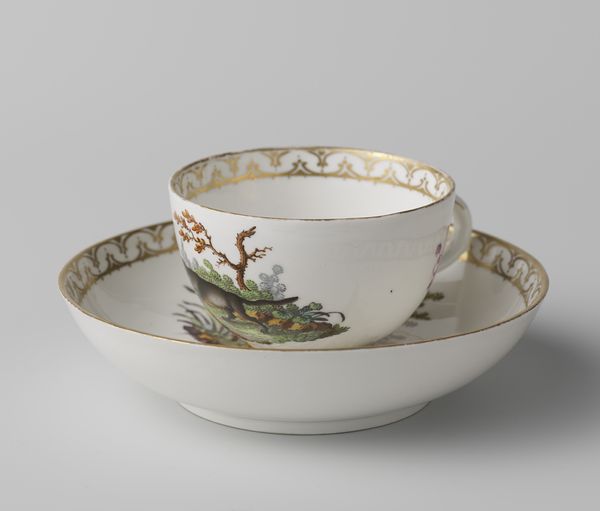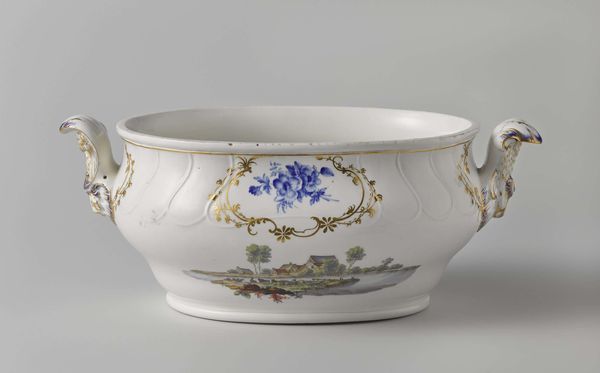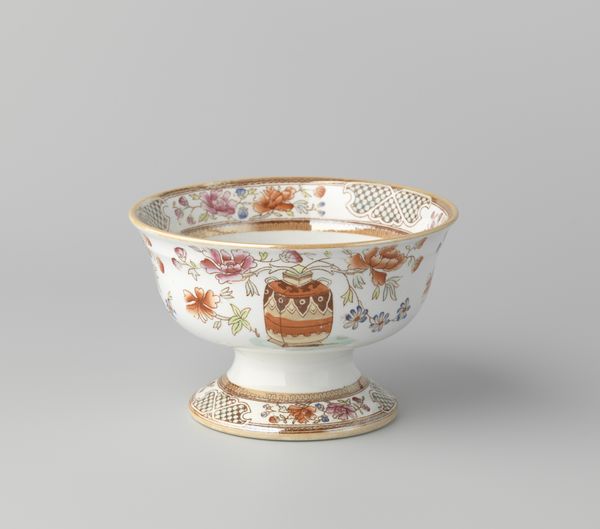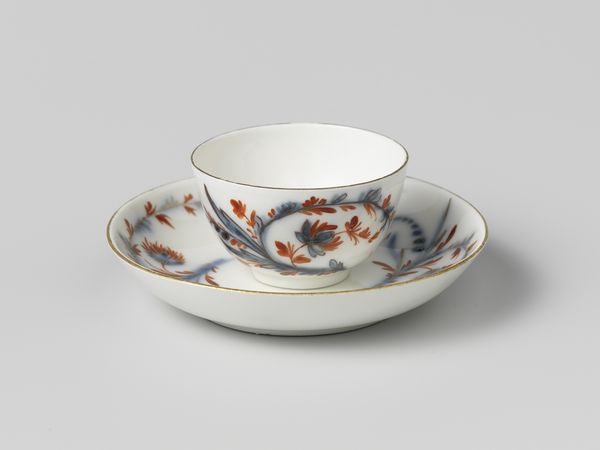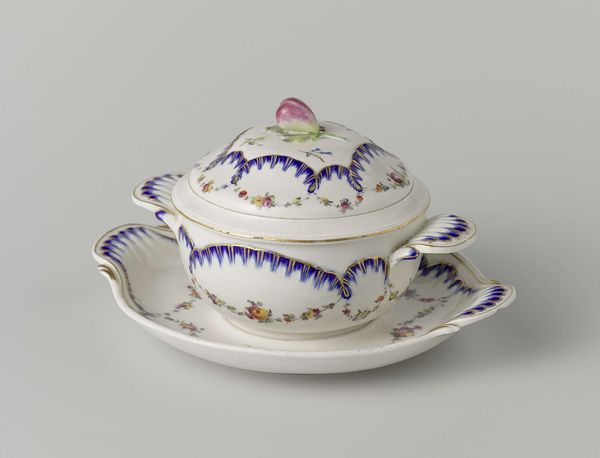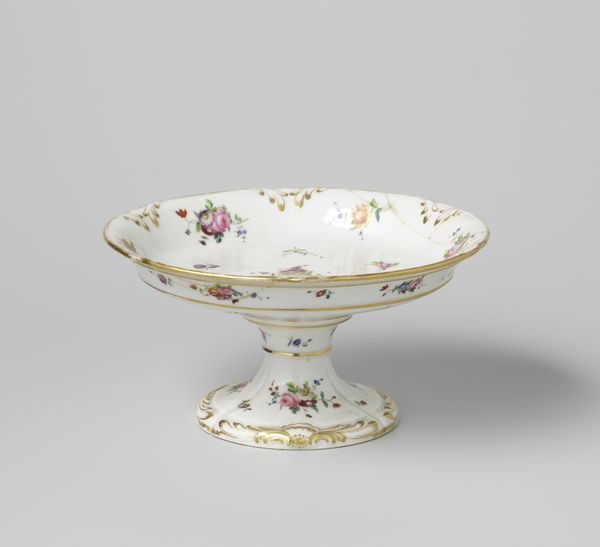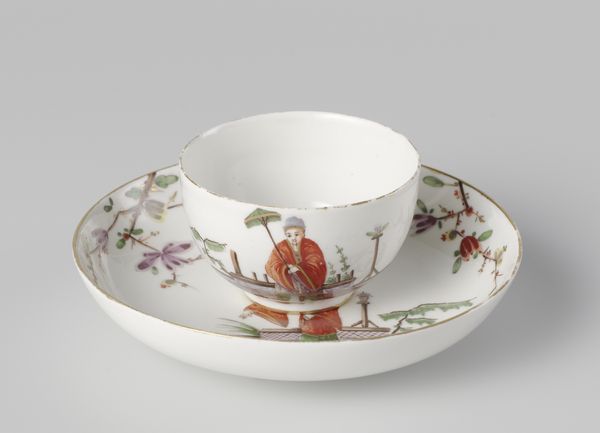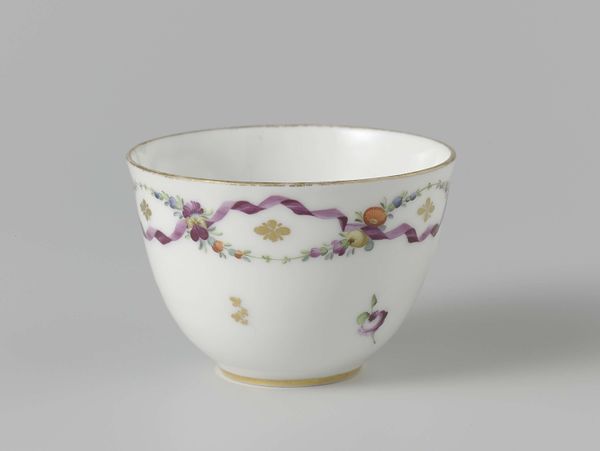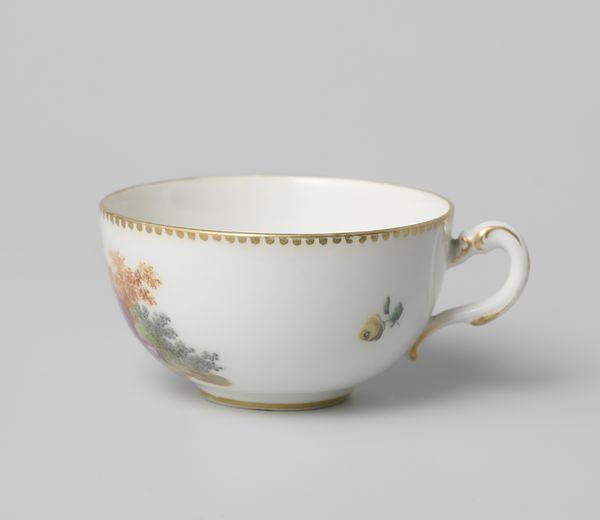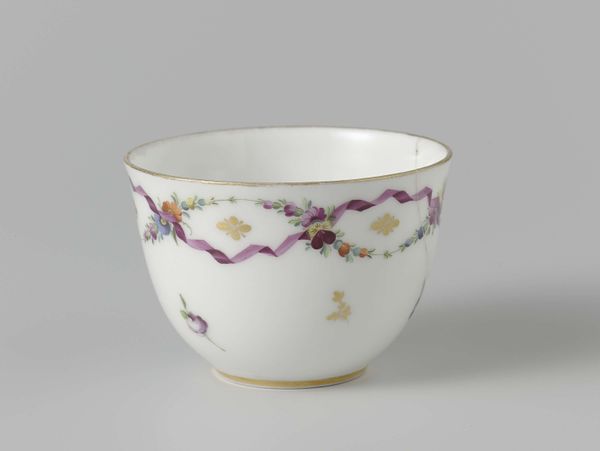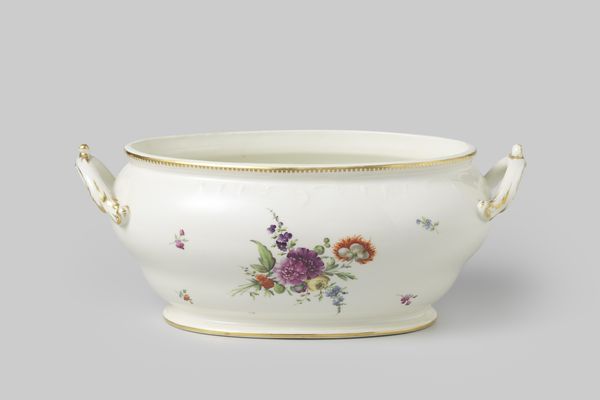
Kop, beschilderd met vogels in een landschap binnen cartouches c. 1778 - 1782
0:00
0:00
loosdrecht
Rijksmuseum
Dimensions: height 3.9 cm, diameter 7.2 cm
Copyright: Rijks Museum: Open Domain
Curator: What a delightful piece! This is a porcelain cup and saucer from Loosdrecht, dating from around 1778 to 1782. Notice the fine brushwork depicting birds within landscape cartouches. Editor: Immediately, I'm struck by how the hand-painted details create a world within a world. There’s something so intimate and delicate about it. It whispers of morning light and countryside calm. Curator: Indeed. The Loosdrecht porcelain factory was known for catering to the tastes of the Dutch elite during that period. The rococo style, with its emphasis on ornamentation and nature, speaks volumes about the socio-cultural values that prized leisure and refined taste. These porcelain items reflect the owners social identity. Editor: Looking closer, those birds aren’t just pretty decorations. The rooster, in particular, is a powerful symbol - a solar emblem representing vigilance, courage, even resurrection in some cultural contexts. His image on an object like this surely imbued it with meaning beyond simple aesthetic appeal. Curator: Absolutely. And the choice of depicting them in cartouches — those frame-like designs — also contributes to its meaning. These borders emphasize the preciousness and curated nature of the scenes themselves, which mirrors how gardens were conceptualized at the time, as carefully designed slices of "nature". The cup serves as a tiny exhibition space in your hand. Editor: It's like holding a miniature stage. I also can’t help but wonder about the narratives the artists wanted to portray. The cup invites you to linger. Imagine, as you’re drinking your tea, these birds silently communicate something profound, perhaps even forgotten over time. The choice of colors, placement and rendering all point to a particular cultural story being expressed. Curator: Precisely. Porcelain production itself was entangled in colonial narratives, so a deeper look would reveal the global context in which Loosdrecht manufactory operated and what the image of rooster signified at the time in the specific place where the cup was used. Editor: I’m walking away from this cup with the feeling that even the smallest object can hold such potent imagery, such weighty meaning. It bridges a gap of centuries. Curator: And reminds us that art always exists within – and comments upon – specific historical and social conditions.
Comments
No comments
Be the first to comment and join the conversation on the ultimate creative platform.
